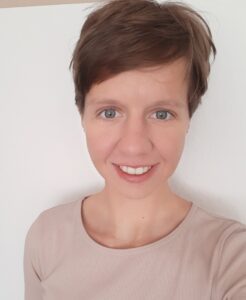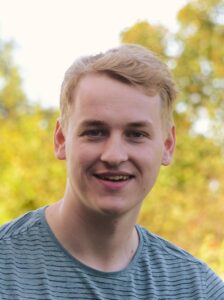7th Doc’s Day – a crash course in data visualization with Dr. Hans-Jörg Schulz, University of Aarhus

As we, Theresa Geese and Eike Matthias Wacker, come from the bioinformatics field, we know only too well how difficult it is to communicate our results to our colleagues in a clear and structured way. And since we know that we are not alone with this problem, we organized a half-day workshop on the visualization of scientific data for the seventh Doc’s Day.
For our workshop we were able to win associate Professor Hans-Jörg Schulz from the University of Aarhus as a trainer. He not only gives workshops, but also holds semester-long lectures and actively researches the topic of visualization. We are therefore very pleased to have found such an expert in the field for our workshop. We extended invitations to doctoral and master’s students specializing in life sciences at Kiel University to join the workshop. With approximately 30 participants, we ensured a broad spectrum of research backgrounds, encompassing diverse visualization practices typical of their scientific endeavors. In a very structured introduction, where we learned which rules and priorities should be applied when creating visualizations, it became very clear to us why it is best to always display your most important data in a coordinate system instead of using, for example, the size of the dots or circles in the plot. Another thing to bear in mind when using colors is that the creator of the plot should not only pay attention to color blindness, but also needs to make sure that the visualization in monochrome still clearly shows what can be seen in the colored version.
After a coffee break with great conversations, we continued with an excursion into the topic of visualization criticism. Associate Professor Hans-Jörg Schulz showed good examples of how a visualization can be deceptive to impose a certain opinion on the reader. We quickly realized which details we as readers must pay attention to if, for example, the axis distances are not kept constant or if data is presented in a distorted way.
Other shown examples included bubble plots in which the size of the individual bubbles grew exponentially with the data values instead of linearly, giving the impression that individual values were much larger than they really were, or pie charts that were three-dimensionally tilted to make individual groups appear larger than they really were.
The workshop continued with a discussion about visualizations previously submitted by the participants. A lively discussion and tips from the workshop trainer resulted in good and simple ways of improving these visualizations. There were good examples of when to keep shapes and colors constant over several plots if they refer to the same data and when to switch to other colors and shapes to avoid misunderstandings among readers.
In the final session, our workshop focused on the visualization of multi-dimensional data. As scientists, it is not always easy for us to visualize them. If more than four dimensions are to be displayed in a plot, you have to find ways to display all of them in an easily understandable way. However, our workshop trainer was able to show us solutions to these tricky problems, for example using scatterplot matrices and their derivatives. He also presented methods that were completely new to us, such as the RadViz method, and that it is also possible to integrate animated visualizations into a PDF. But it was also always important to know where the limits of these forms of visualization lie. Furthermore, our trainer showed us ways to elegantly present our high-dimensional data as interactive visualizations and what advantages it brings to the reader and to us as scientists to deal with complex data in this way. In the last half hour, we participants were able to get answers to all kinds of questions on the topic and put our newly acquired knowledge to the test in a digital quiz. Prof. Astrid Dempfle won the quiz and received a large bar of chocolate as a prize, which brought our visualization workshop to a close, leaving us all in a good mood and ready to present our scientific findings in future even better.
After a lunch break, the miTarget Docs who have visited Boston in recent years as part of a lab visit in Curtis Huttenhower’s working group went on to share their experiences and recommendations for future lab visits to Boston in a constructive discussion with the miTarget coordinators and speaker Andre Franke. And with that, the seventh miTarget Doc’s Day came to an end and we are already looking forward to the next one!


